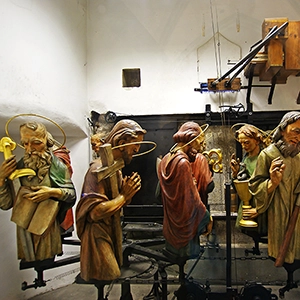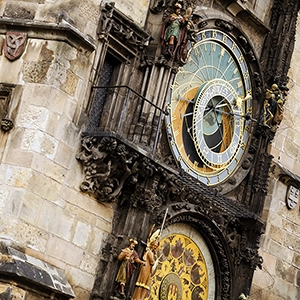How To Read The Prague Astronomical Clock

The Prague Astronomical Clock, affectionately known as the "Orloj," has graced the Old Town Square of the Czech capital since 1410. As one of the oldest and most elaborate timepieces in the world, the Orloj has long captivated visitors and locals alike with its intricate design and rich history. While it may appear daunting at first glance, learning to read the astronomical clock is a rewarding and insightful experience. In this article, we will explore the various components of the Orloj and provide a step-by-step guide on how to interpret its captivating display.
Understand the clock's three main components
To read the Orloj, it is essential to familiarize yourself with its three main components:
The Astronomical Dial
Located at the top, this dial displays the astronomical information, including the position of celestial bodies, the time of day, and the zodiac calendar.The Calendar Dial
Situated below the astronomical dial, the calendar dial showcases a perpetual calendar that represents the days, months, and important holidays.
The Procession of the Twelve Apostles
Every hour, a procession of twelve figures representing the apostles appears in the two windows above the astronomical dial, accompanied by a presentation of other moving sculptures and the ringing of the clock's bells.
Reading the Astronomical Dial
The astronomical dial is the most complex component of the Orloj and can be divided into several parts:
The Outer Ring
This displays the 24 hours of the day in Old Czech Time, indicated by the golden hand with a sun at its tip. The time is shown in Roman numerals for the daylight hours (from 6 AM to 6 PM) and Arabic numerals for the nighttime hours (from 6 PM to 6 AM).
The Zodiac Ring
This displays the twelve zodiac signs, represented by their respective symbols. The zodiac ring rotates throughout the year, showing the current zodiac sign in relation to the golden sun hand.
The Ecliptic Circle
This blue circle represents the sky, with the golden sun hand indicating the sun's position during the day.
The Sun and Moon Spheres
These spheres move along the ecliptic circle, representing the positions of the sun and moon in the sky. The sun sphere is golden, while the moon sphere is silver and adorned with a face.
Interpreting the Calendar Dial
The calendar dial, painted by Czech artist Josef Mánes, represents the days of the year, the months, and the symbols of the zodiac. The circular display rotates, with a golden pointer indicating the current date. The months are written in Czech, with their respective zodiac symbols displayed above each month.
Observing the Procession of the Twelve Apostles
Every hour, the Procession of the Twelve Apostles comes to life, providing an entertaining spectacle for visitors. The apostles parade past the two windows above the astronomical dial, while other sculptures, such as the figures of Death and Vanity, move in tandem. The clock's bells chime to mark the passing of each hour.
Learning to read the Prague Astronomical Clock is a fascinating journey into the world of astronomy, history, and art. By understanding its various components and their meanings, one can truly appreciate the ingenuity and craftsmanship that went into the creation of this remarkable timepiece. As you stand before the Orloj, take the time to decipher its enchanting display, and you will be rewarded with a deeper connection to the clock's rich history and the wonders of the universe it portrays.








